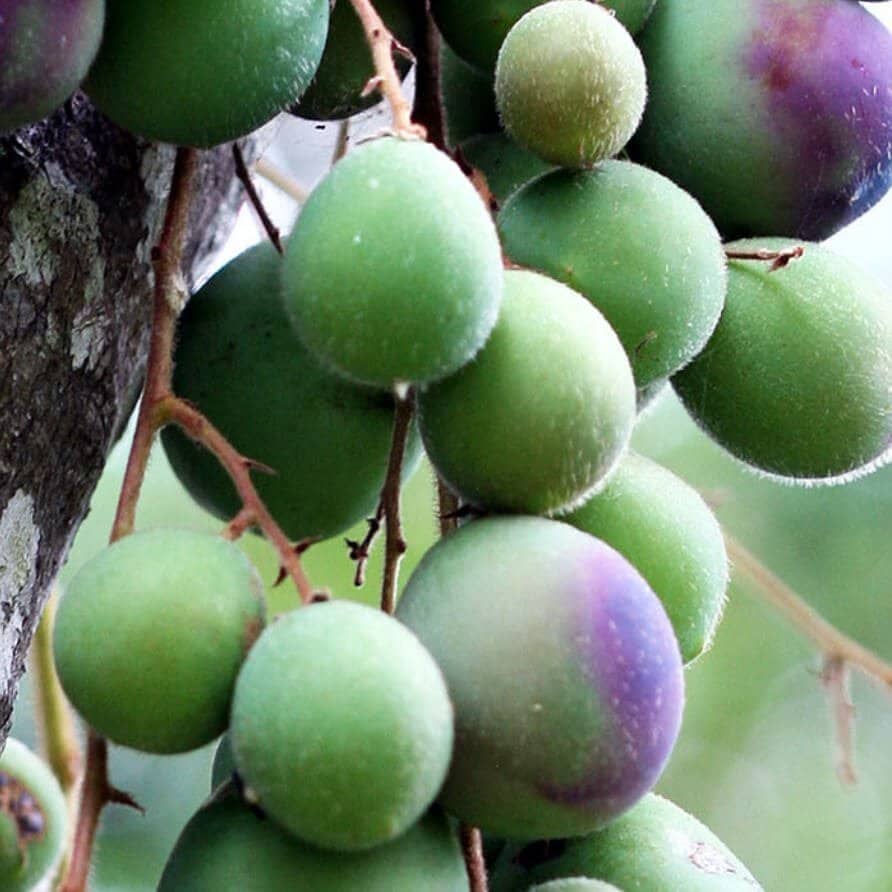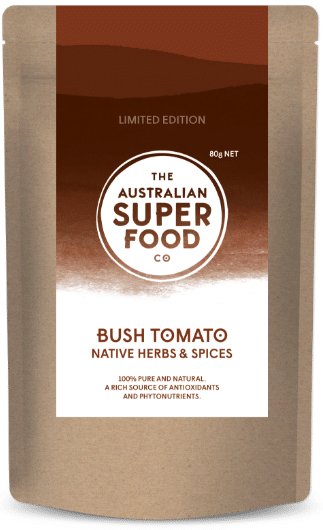The bush tomato (also known as Solanum centrale) is a fast-growing shrub native to the arid desert regions of central Australia, from Tennant Creek in the Northern Territory to Marla in South Australia and the east Kimberly in Western Australia. More than 80 per cent of harvesting is done by hand by Aboriginal wild harvesters.
Bush tomato grows in the desert area after summer rains, with the fruits growing for two months until they are collected in late autumn through to early winter. The small, round fruit turns from green to yellow as it ripens, and then from yellow to red as it is sun-dried on the bush.
Bush tomatoes have been an important bush-food staple for Indigenous Australian for thousands of years. Traditionally the sun-dried fruit was collected through autumn and winter, dried and stored for up to a number of years.
Download The Australian Superfood Co provenance map here.
Flavour:
A sharp pungent tomato flavour with sweet caramel and raisin characteristics which matures with prolonged cooking.
Palate:
A distinctive bitter flavour to start, followed by sweet overtones of caramel, raisin or tamarillo and lingering subtle notes of spice.
Aroma:
A definitive pungent tomato aroma, much stronger and less acid than sun dried tomato with other sweeter characteristics reminiscent of caramel and tamarillo. The flavour matures on standing or prolonged cooking.
While the mature yellow fruit can be eaten fresh, bush tomato is usually used in its dried form. It is ideal for use in sauces, chutneys, curries and salsa, and is a great complement to red and white meat. Ground into a coarse or fine powder, it can be used in bread and savoury muffins, frittata, pasta sauces, relish, and salad dressings.
Bush Tomatoes pungent tomato flavour and aroma makes it a delicious addition to slow cooked meats and tagine style dishes.
Add whole Bush Tomatoes to your next antipasto platter alongside olives, pickled vegetables, salumi and your favourite cheese. Roughly chop or grind in a mortar and pestle or spice grinder to make a tomato flavoured dukkah or combine with other dried herbs and spices to make a delicious spice blend for seasoning barbecue meats. Their strong pungent flavour pairs particularly well with red and game meats.
Add flavour to oil and vinegar based marinades and salad dressings, meat based sauces and egg based condiments. Also complements fish, seafood, chicken, pork, and lamb and pairs perfectly with most vegetable varieties.
Spice up a Virgin or Bloody Mary with a native twist by adding a pinch or two of freshly ground Bush Tomato to the mix and garnish with whole or chopped Bush Tomatoes.
Click here for delicious Bush Tomato recipe ideas.










